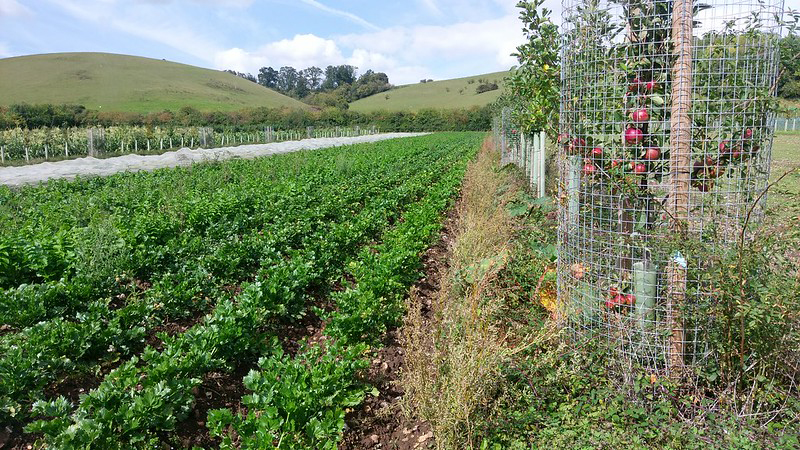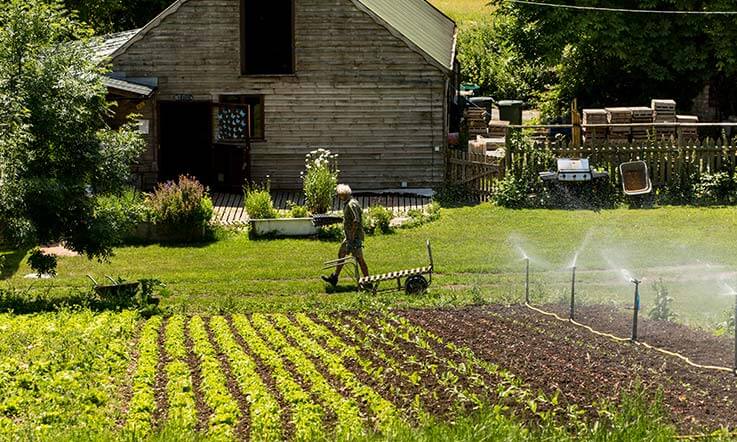Following the initial announcement earlier this year of Sustainable Farming Incentive (SFI) actions relating to agroforestry, a review of which was produced by Colin Tosh and Will Simonson, Defra has recently released an update to their SFI and Countryside Stewardship (CS) offers along with a more general message of support for development for the Environmental Land Management schemes by the newly elected government. The main change is the introduction of new Capital Grant options which include payments for individual actions, planning, and physical items. A minor addition has also been made to the existing SFI actions, adding in some optional guidance for those choosing to take them on.

The newly introduced Capital Grant options are designed to sit side-by-side with the existing SFI agroforestry actions. The first couple consist of general payments for tree planting:
Notable here is the large difference in payments between fruit trees and woodland trees, most likely reflecting average differences in market prices. This could have ramifications on the design choices that agroforestry practitioners may make.
Perhaps to counter a potential domination by fruit trees in agroforestry designs going forward, there is an additional supplementary payment on offer:
This supplement specifies that:
“You must use this item only on an agroforestry system which has 5 or more different species of tree planted in the last 12 months. These can be fruit or woodland trees, or a mixture of both.
At least 5 different species must make up least 10% of the total number of trees in the parcel. This must be clearly visible on your invoice.
For example, if you have 100 trees you must have at least 10 trees of 5 different species.”
This is a welcome addition and hopefully an attractive top-up that can be utilised when designing a new agroforestry system. Speaking of which, another Capital Payment update is the support for developing an agroforestry plan.
An Agroforestry Plan template (PA4) has been produced for this purpose. This 27 page document includes description and maps of the land holding, how the agroforestry will support the business and produce ecosystem services, detailed plans for each agroforestry system and land parcel, a management plan for the agroforestry and how agroforestry across the whole farm will be managed in an integrated way, potential impacts, risks and their mitigation. An appendix lists features which may be at risk (e.g. biodiversity, landscape, historic environment) and the resources and checks that need making in each case. There is an additional template document to be completed for each field parcel. Once complete, the plan needs to be approved by the Forest Commission local area office before it is submitted to the Rural Payments Agency.
The final group of Capital Grants announced consider the practicalities of planting trees with payments focused around tree guards and protection.
Unlike the previously mentioned payments, this can also be applied to trees planted on land that is under the existing SFI actions of ‘Manage traditional orchards’, ‘Manage hedgerows’, or ‘Manage wood pasture and parkland’, as well as the existing agroforestry in-field SFI actions.
There are restrictions, however: the payments for tree guards cannot be mixed so you will have to commit to one type of guard for all your trees i.e. all tube and mesh.
In addition to the new Capital Grants, the existing agroforestry SFI actions have received a minor update. The main change is the introduction of some voluntary guidance. This takes the form of a few bullet points highlighting some areas to consider when developing an agroforestry plan. The topics are:
The level of information is fairly basic, but as a starting point there is lots of potential to signpost a more comprehensive set of resources that prospective and active agroforestry SFI participants can draw from. The mention of the Agroforestry Handbook could be an indication of the potential to come.
The new updates on capital payments including trees, guards and agroforestry plans, as well as additional guidance, are all welcome, but we still need to “watch this space” for information on the forthcoming actions to maintain medium and high density in-field agroforestry, for which the payment rates were advertised at the beginning of the year.
